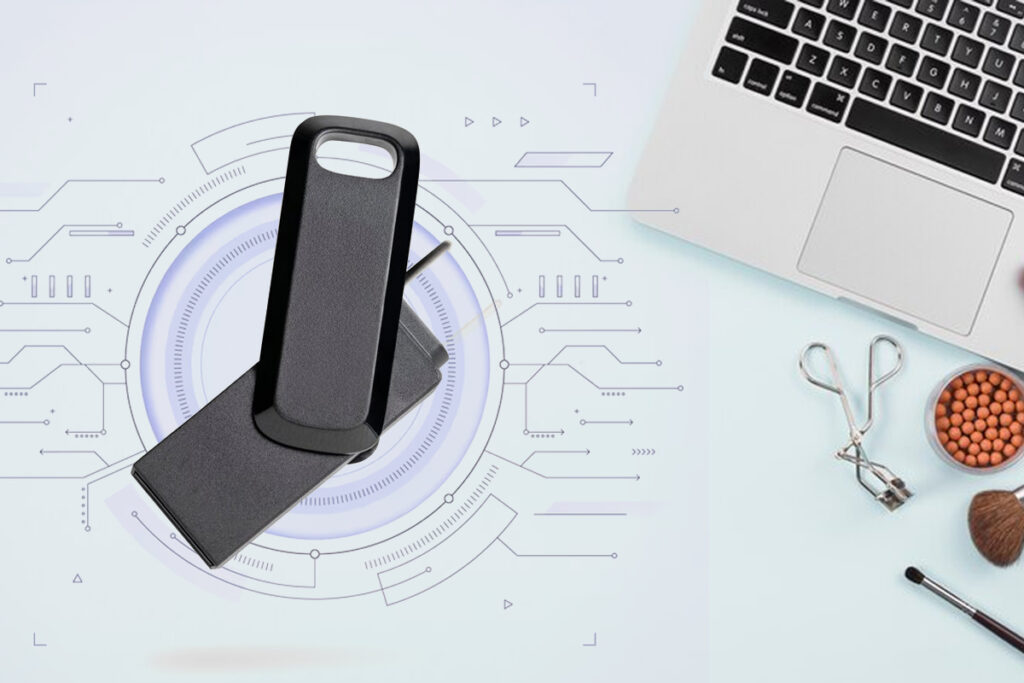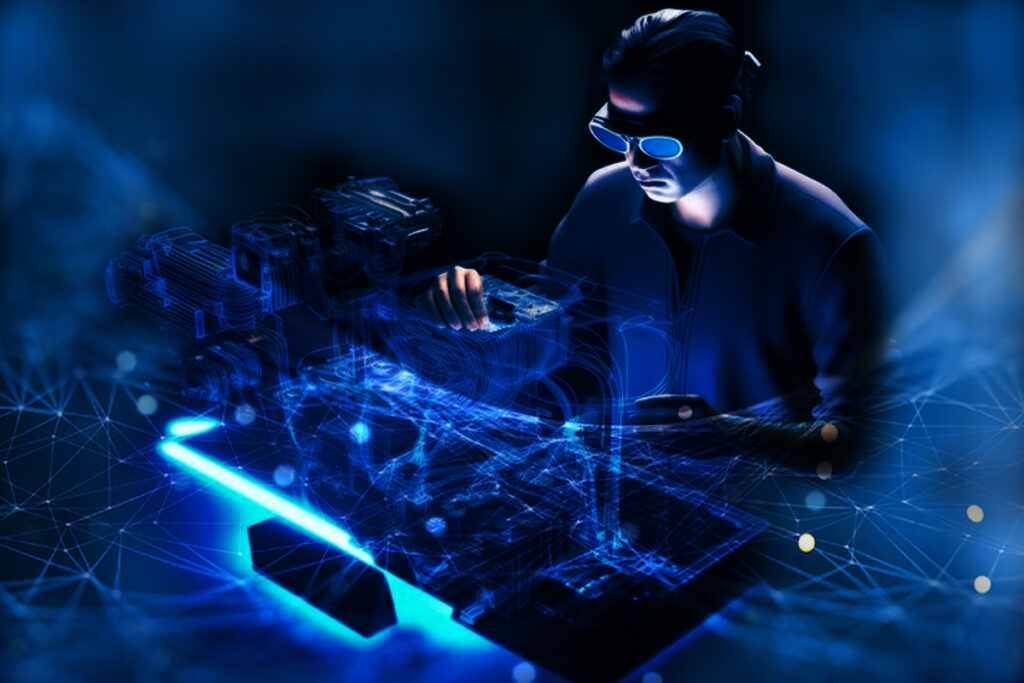The Pen drive is a plug-and-play portable storage device that uses flash memory and is lightweight enough to attach to a key chain. A keychain drive can be used in place of a floppy disk or CD. When the user plugs the device into their USB port, the computer’s operating system recognizes the device as a removable drive. Unlike most removable drives, a keychain is dependent. Keychain drives are available in capacities ranging from 8 MB to 2 gigabytes, depending on the manufacturer, in a corresponding range of prices.

Before going to the unit of memory, let us first explain the number systems.
Number Systems:
Every computer stores numbers, letters, and other special characters in code from before, going into the details, it is essential to have a basic understanding of number systems. We are basically discussing about two types of number systems-
Non-Positional Systems:
In the early days, human beings counted on fingers but used stones, and sticks to indicate values when they counted beyond ten numbers. In this system, we have symbols such as I for 1, II for 2, III for 3, etc. Each symbol represents the same value regardless of its position in a number. So, to find out the value of a number, one has to count the number of symbols present in the number, which is very difficult and time-consuming. So, positional number systems come into the picture.
Positional Number System:
In the positional number system, the symbols called ‘digits’ represent different values, depending on their occupied position in the number. The value of each has been determined using the following considerations.
- The digit
- The position of the digit and
- The base value of the number system.
Usually, the four-number system is used. They are decimal, binary, octal, and hexadecimal number systems.
Decimal number system:
In the system, the base value is considered as 10 as because there are altogether 10 digits (0 to 9). Here, successive positions of digits in a number from right to left represent units, ten, hundred, thousand, and so on.
Let us explain the system by taking one decimal number 2145. The value can be written as
214510=(2*103+1*102+4*102+50*100)=2000+100+40+5,
Where digit 5 is in the unit position, 4 in the ten positions, 1 in the hundred positions, and 2 in the thousand positions. The value of the base in the positional number system indicates the following characteristics-
- The value of the base determines the total number of digits in the number systems.
- The maximum value of a single digit is always equal to base value-1.
Binary system:
In binary systems, base value is 2. Here only two digits(0 and 1) are used. In the system, the rightmost is units (20), the 110112=(1*24)+(1*23)+(0*21)+(1*20)=16+8+0+2+1=27
Decimal to binary convert:
The short form of the binary digit is ‘bit’. A ‘bit’ computer terminology is represented by a 0 or 1. The binary equivalent of decimal number 2 has to be stated as 10 (Read in the one, zero) and with 3 bits, only 8 probable patterns of 0s and 1s are possible.
Every computer stores numbers, letters, and other special characters in binary form, so it is difficult to interpret because the output is in 0 and 1. Hence two other number systems-octal and hexadecimal are introduced.
Unit of Memory:
All information in the computer in the computer is handled using electrical components like the integrated circuit, and semiconductors, all of which can recognize only two states- the presence or absence of an electrical signal. two symbols used to represent these two states are 0 and 1 and are known as BITS(an abbreviation for binary digits). 0 represents the absence of a signal, and 1 represents the presence of a signal.
A BIT is, therefore, the smallest unit of data in a computer and can either store a 0 or 1. Since a signal bit can store only one of the two values, there can possibly be only four unique combinations: 00 01 10 11. The term “nibble” originates from the fact that the term “byte”. A nibble is a small bite, which in the context is construed as “half a bite”. A value represented by 4 bits is referred to as a “nibble”. For example, the value 0110 is 4 bits long, and therefore “half a byte”, or a “nibble”. Bits are, therefore, combined together into larger units in order to hold a greater range of values.
BYTES are typically a sequence of eight bits put together to create a signal computer alphabetical or numerical character. More often referred to in larger multiples, bytes may appear as 1 Kilobyte (1,024 bytes), MegaBytes (1,048,576 bytes), Giga Bytes(1,073, 741,824), Terabytes(approx. 1,099,511,000,000 bytes), or petabytes(approx, 1,125,899,900,000,000 bytes). Bytes are used to quantify the amount of data digitally stored(on disk, tapes) or transmitted (over the internet), and are also used to measure the memory and document size.
- 4 bit = 1 Nibble
- 2 Nibble = 1 Byte
- 1024 Byte = 1 Kilo Byte
- 1024 KB = 1 MegaByte
- 1024 MB = 1 Giga Byte
- 1024 GB = 1 Tera Byte
Before going to the discussion regarding software/hardware, let us explain the process that initially starts when the computer is switched on.
Booting:
This is the process where critical instructions are automatically fetched and executed from ROM( Read Only Memory) to perform the tasks of self-testing as power is turned on(POST), and routing to determine if input devices are properly attached to the system for their eventual usage called BIOS (Basic Input Output System).
It has been mentioned that programs or instructions have to be fed to the computer to do specific tasks. So it is necessary to provide the sequence of instructions so that your work can be done. We can divide the computer components into two major areas, namely, hardware and software.
Hardware is the machine itself and its various individual equipment. It includes all mechanical, and electronic devices such as monitors, printers, electronic circuits, and floppy and hard disks which are explained in the previous discussion. In the following lesson, we will discuss the part, namely, software.
Software:
As you know computers cannot do anything without instructions from the user. To do any specific job you have to give a sequence of instructions to the computer. This set of instructions is called a computer program. Software refers to the set of computer programs, procedures that describe the programs, and how they are to be used. We can say that it is the collection of programs, which increases the capabilities of the hardware. The software guides the computer at every step and computer software is classified into two categories.

Application Software:
Application Software is a set of programs that carry out operations for a specific application. For example, payroll is application software that allows an organization to produce pay slips as an output. Application software is useful for word processing, billing systems, accounting, etc. E.g. Ms. Word, Ms.Excel, Corel Draw, Tally, etc.
System Software:
System software may be defined as a set of one or more programs designed to control the operation of the computer system. System software is generally designed to control all operations required to move data into and out of the computer. System Software allows application packages to be run on the computer with less time and effort. Remember that it is not possible to run application software without system software operating systems, Compilers, etc.
